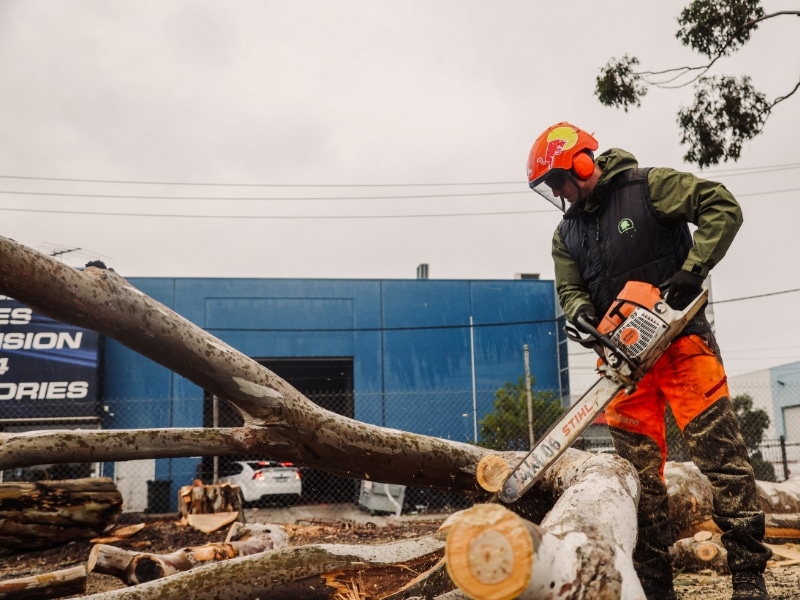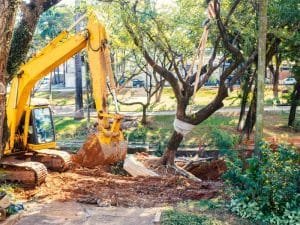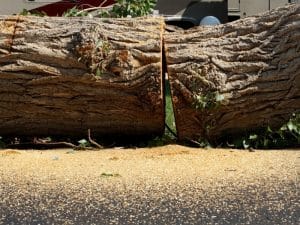Removing dead trees from commercial properties is necessary ensuring safety and aesthetic appeal. Whether you own or manage a commercial property in Melbourne, the cost of removing a dead tree can vary depending on several factors. In this article, we’ll explore the different elements that impact the cost of removing dead trees in commercial spaces so you can make an informed decision and understand what to expect.
What factors influence the cost of dead tree removal?
When you think about the cost of removing dead trees, there are various elements to consider. Here are some of the key factors that affect the price:
- Tree size and height: Larger trees often require more time, equipment, and labour to remove.
- Location: If the tree is near power lines, buildings, or other structures, the removal process becomes more complex and expensive.
- Accessibility: Difficult-to-reach trees, like those in tight spaces or on steep slopes, may require special equipment or additional safety precautions.
- Tree health: While the tree is dead, its condition (e.g., rotting or standing firm) can impact the removal method.
- Permit requirements: Some council areas may require permits, which could add to the cost.
- Additional services: Including services like stump grinding or site cleanup can increase the overall cost.
Why is tree removal necessary for commercial properties?
Dead trees in commercial spaces pose multiple risks affecting your business operations and safety. Here’s why tree removal is so necessary:
- Safety concerns: A dead tree can be a hazard to your staff and customers. Strong winds or storms can cause limbs to break off or even the entire tree to fall, potentially causing serious injury or property damage.
- Aesthetic appeal: A healthy, well-maintained landscape enhances the curb appeal of your commercial property. Removing a dead tree allows you to replace it with a thriving, attractive tree or improve the overall appearance.
- Preventing further damage: A dead tree can attract pests like termites or rodents, which may affect nearby structures. Getting rid of the tree early can avoid such issues.
- Improved space utilisation: Removing a dead tree frees up valuable space for parking, outdoor seating, or other business needs.
By removing trees in commercial spaces, you ensure the safety and longevity of your property while maintaining a professional and welcoming environment.
How does tree size affect removal costs in commercial spaces?
The size of the dead tree plays a significant role in determining the cost of removing the dead tree. Here’s why:
- Trim trees: These trees are typically easier to remove as they require less time and equipment. Their removal might cost less than that of larger trees.
- Medium trees: These trees require more effort to remove. You might need a team of professionals and larger machinery to do the job.
- Large trees: The bigger the tree, the more expensive the removal process. Large trees might require heavy machinery like cranes or chainsaws and a multi-step process to remove them from the site safely.
What is the process for tree removal in commercial spaces?
Tree removal involves a series of steps that ensure safety and efficiency. Here’s a breakdown of the typical process:
- Assessment and planning: A qualified arborist will inspect the tree and evaluate its condition, location, and surrounding environment.
- Permission and permits: If your council requires a permit for tree removal, your arborist can assist with obtaining this.
- Removal: The tree is then carefully removed using appropriate tools and techniques, depending on its size and location.
- Stump grinding (Optional): After the tree is removed, the stump can be left in place or ground down, depending on your preference.
- Site cleanup: The final step involves cleaning up any leftover debris, leaving your space ready for replanting or other uses.
Is stump grinding included in the cost of removing dead tree?
Stump grinding is usually not included in the cost of removing dead trees, although many companies, like The Yard, offer this service separately. Stump grinding involves removing the tree stump to below ground level, ensuring no remnants that could cause safety hazards or attract pests are left.
- Why choose stump grinding?
- Prevents regrowth
- Clears space for new landscaping
- Reduces the risk of pests like termites
Discuss stump grinding costs with your arborist for a precise estimate of the total costs of removing tree stumps.
What are the risks of delaying dead tree removal in commercial properties?
Delaying tree removal can lead to several risks, especially in commercial spaces. Here’s why you should act promptly:
- Structural Damage – Falling branches can damage roofs, fences, and vehicles.
- Injury Risks – A dead tree can collapse unexpectedly, posing risks to employees, customers, or tenants.
- Increased Removal Costs – Delayed removal may lead to more extensive damage, requiring emergency removal at a higher cost.
- Legal Liability – You may face legal claims if an accident occurs due to a neglected dead tree.
How do safety and risk affect the cost of removing dead trees?
Safety is a top priority when removing trees, especially in commercial spaces. The level of risk associated with the removal process can significantly impact the cost:
- Risk of Property Damage: If the tree is near structures, power lines, or vehicles, additional safety measures may be required to ensure the removal process does not damage them, increasing the cost.
- Risk to Personnel: In high-risk situations, more experienced workers or additional crew members may be needed, raising the overall removal cost.
- Specialised Equipment: To manage high-risk removals safely, specialised equipment such as cranes, rope systems, or rigging may be necessary, which can add to the cost.
The more hazardous the situation, the higher the price will be due to the need for additional planning, equipment, and safety measures.
What are the benefits of hiring a qualified arborist for tree removal?
Hiring a qualified arborist to handle the cost of removing dead trees offers several advantages:
- Expertise and experience: Arborists have the training to assess the tree’s condition, determine the safest way to remove it, and execute the job efficiently.
- Proper equipment: Professional tree removal services come equipped with the right tools and machinery to handle trees of all sizes.
- Safety: Arborists are trained in safety protocols to protect your property and crew during removal.
- Compliance: A qualified arborist will ensure all the necessary permits and regulations are followed, helping you avoid fines and delays.
Keep your property safe and attractive
Removing a dead tree from a commercial property improves the aesthetics of the space, ensures safety, and prevents further damage. Several factors, including tree size, location, and the specific removal process, can affect the cost of removing dead trees. Hiring a qualified arborist will ensure the job is done safely, efficiently, and in compliance with local regulations.
The Yard offers comprehensive solutions that prioritise safety and professionalism. Our expert team is equipped to handle tree removal, from evaluation and permits to cleanup. We ensure every job is completed to the highest standards, adhering to local guidelines and legislation. With fully insured and experienced professionals, you can trust us for a hassle-free service that meets all your needs. Contact The Yard today to get a quote!
Frequently Asked Questions
- Are permits always required for dead tree removal?
Permit requirements vary by location. It’s best to check with your local council. - Can I remove a small dead tree myself?
While possible, it’s generally recommended to hire a professional, even for smaller trees, to ensure safety and proper disposal. - How do I know if a tree is truly dead?
Signs include no green leaves, brittle branches, and fungal growth. An arborist can provide a definitive assessment. - What should I do with the wood after the tree is removed?
You can often have the wood chipped for mulch or arrange for its removal. - How can I prevent trees from dying in the future?
Regular tree maintenance, such as proper watering and fertilising, is crucial. Seek advice from an arborist for tailored recommendations. - Does insurance cover dead tree removal?
Some insurance policies may cover removal if the tree poses an immediate danger. Check with your provider. - How long does the tree removal process typically take?
The duration depends on the tree’s size, location, and job complexity. - What is the best time of year to remove a dead tree?
While removal can be done year-round, some seasons may be more advantageous. Consult with a professional. - How do I know if a tree is dangerous and needs immediate removal?
Signs include large cracks in the trunk, significant lean, decay, or fungal growth. If you’re unsure, consult an arborist immediately. - Besides safety, what are other long-term benefits of removing dead trees? Removing dead trees can prevent the spread of disease to healthy trees and improve the overall health of your landscape.




